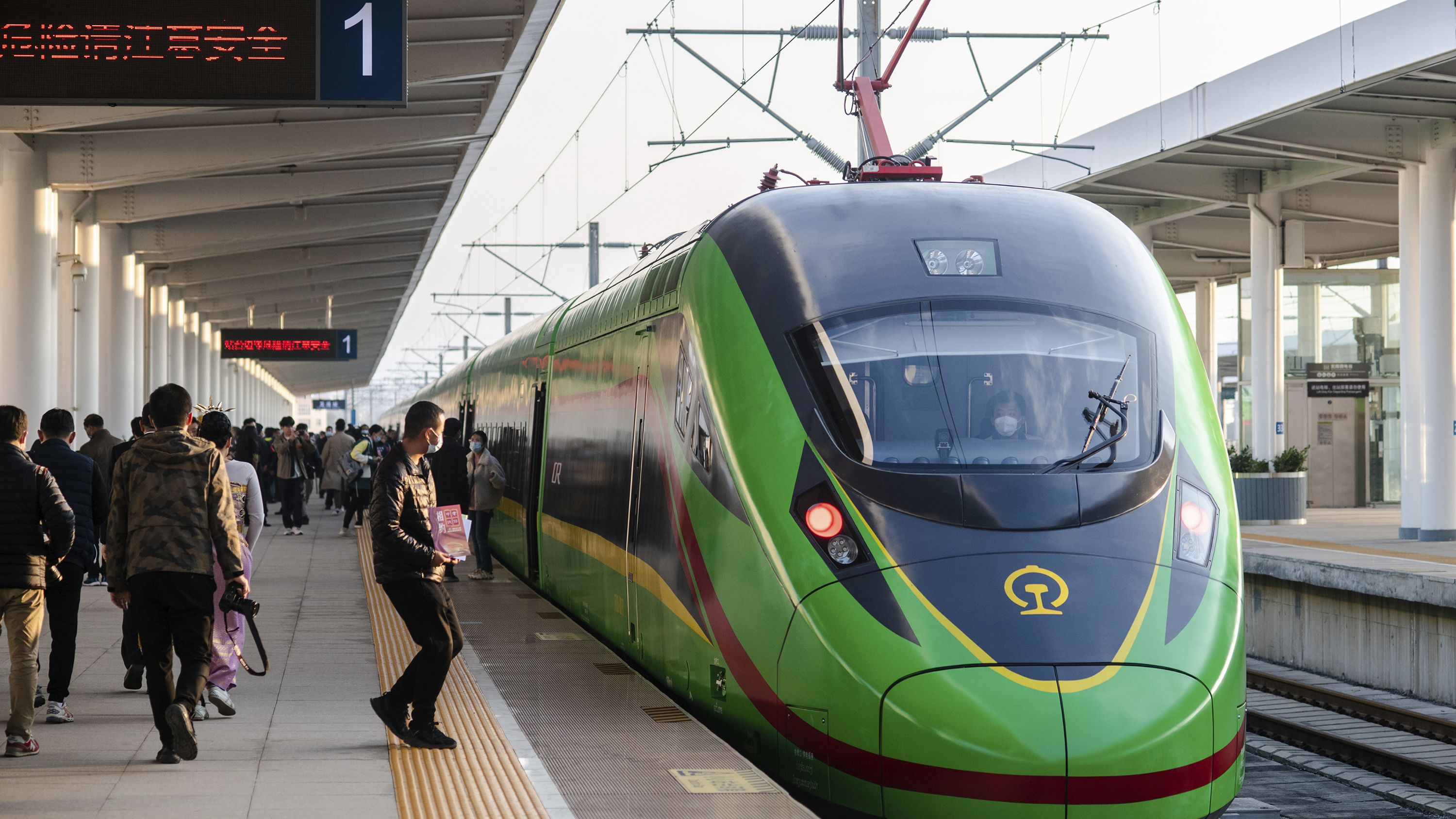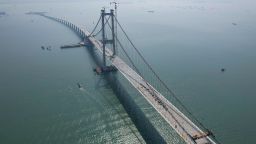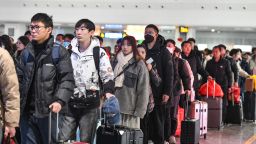Imagine jumping on a train in southwestern China, traveling some 2,000 miles and arriving in Singapore – less than 30 hours later.
That’s the scenario China is envisioning for Southeast Asia as part of its Belt and Road Initiative (BRI), a vast overseas infrastructure development program that launched more than a decade ago.
In 2021, the semi-high-speed Laos-China Railway opened to passengers, connecting the southwestern Chinese commercial hub of Kunming to the Laotian capital of Vientiane – a roughly 10-hour journey spanning some 1,000 kilometers (621 miles) that officials claim has boosted numbers of overland Chinese travelers while greatly benefiting local vendors and businesses in the tiny land-locked country.
Also with China’s help, Southeast Asia’s first bullet train began operating in Indonesia in October 2023 following years of setbacks and delays, connecting the capital Jakarta with Bandung in West Java, one of the country’s biggest cities and a significant arts and cultural hub.
Meanwhile, a second high-speed rail project is underway in Thailand, which aims to connect the Laos-China Railway with Bangkok – but is now facing further delays and mounting construction costs. Launching in phases, the Thai government currently expects the full line to be operational by 2028. The Chinese government has not detailed a timeline.
The project, seen by some analysts as a ‘fiscal trap’, has been a source of heated debate and scrutiny in Thailand, with the government agreeing to shoulder the full construction cost of $5 billion (179 billion baht) for the first building phase, reported Reuters. The Chinese side will be responsible for installing systems, design, and procurement of trains.
And when that line is finally complete, the plan is to expand into northern Malaysia, where it will connect to the capital Kuala Lumpur before finally ending 350 kilometers (218 miles) down south in Singapore.
In January, bids by local and international consortiums were submitted for the lucrative project. But Japanese firms, including the East Japan Railway Co, reportedly pulled out after deciding that it would be too risky without official financial support from the Malaysian government.
“China already boasts the world’s largest high-speed railway network and Chinese firms have long been looking to sell and export their infrastructure technology to other countries,” says travel and consumer trends analyst Gary Bowerman, founder of Check-in Asia, a tourism-focused research and marketing company.
Southeast Asia is the “obvious” choice because of its “proximity to China,” Bowerman adds.
“Connecting mainland cities by train directly into Laos and other Southeast Asian countries (down the line) will make it easy, and advantageous, for Chinese travelers – many who aren’t looking to travel long distances, for long periods of time.”
Southeast Asia’s appeal
Offering everything from ancient temples in Laos and pristine beaches in Thailand to lush rainforests and eco-tours in Malaysia, Southeast Asia has long been a big draw for Chinese travelers, experts note.
“Many countries share borders and long histories with China,” says political economist Pon Souvannaseng, assistant professor of global studies at Bentley University in the US.
“China of course, sees Southeast Asia as a key market for export as well as a key area for security and I think, ultimately wants to see Southeast Asian countries within its sphere of geopolitical influence.”
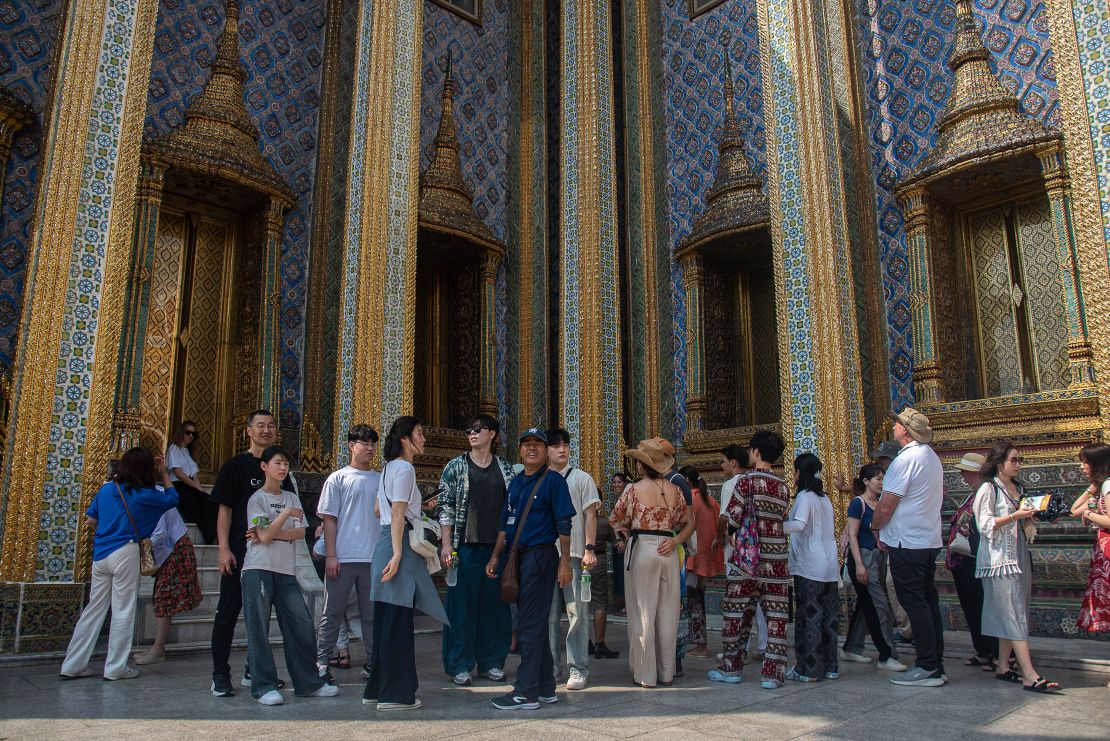
Interestingly, the region’s large Chinese diaspora is another big draw, experts add.
“Cities like Penang and Malacca in Malaysia and Phuket Old Town, with temples and architecture, were built by Chinese immigrants and are very popular with Chinese tourists because of their historical and cultural links,” says Bowerman.
Adding to this is the rise in popularity of rail travel – especially among younger Chinese tourists, many whom are committed to sustainable travel and looking for a new sense of adventure, Bowerman adds.
Pan Wenbo, a 30-year-old security practitioner from Beijing, tells CNN that taking an epic train journey across Southeast Asia from his country, as opposed to flying, would have to be cheap and offer plenty of scenic views along the way. Pan has visited Thailand, Singapore, Vietnam and the Philippines in the past five years and says he is keen to explore other countries in the region.
Others like university student Mei Wei have taken travel tips and inspiration from popular influencers on Chinese social media apps like Douyin – China’s version of TikTok – and Youku, the Chinese YouTube.
Thanks to several travel videos she has seen in recent months, Wei says she is now planning a summer trip to Laos, Cambodia and possibly Thailand, to visit “unique attractions” like the Angkor Wat temple complex in Siem Reap.
She told CNN that she is particularly excited about traveling by train.
“I’m not a big fan of flying. In China, I love taking trains because you get to see more on the ground (as compared to being on a plane from above) and travel more directly into the heart of cities.”
“It also helps that prices are usually consistent and cheaper than booking flights when you are at the mercy of airlines,” she adds.
Challenges and controversies
China’s Belt and Road Initiative was launched at the beginning of Xi Jinping’s presidency.
In addition to high-speed railways, multi-billion dollar sea bridges and highways, ports, airports, power plants and telecommunication networks are all playing a fundamental part in creating the new “Silk Road” that the ruling Chinese Communist Party desires.
A lot of these projects, like the China-Laos Railway, were designed with economic interests in mind, experts say. According to Chinese state media, the China-Laos Railway cumulatively transported 4.22 million tons of freight in 2023, an increase of 94.91% year-on-year.
Political economist Souvannaseng, who rode the train months after passenger services launched in April 2023, said it was “very clearly, even near the full construction and inauguration” a project for cargo transfer, with China and Thailand being the main nodes for trade and Laos being left footing the bill for the massive project.
“It reminds me a lot of the Orient Express and the way it benefitted the Hapsburg and Ottoman empires while the hinterland Balkan territories were saddled with that debt and it hampered their economies well over a century later.”
Chinese-funded and supported infrastructure projects are also widely viewed with suspicion and have been lambasted as attempts by Beijing to boost influence and gain control over smaller neighboring countries while having massive financial consequences for struggling countries.
“Beijing, I think, ultimately wants to see Southeast Asian countries within its sphere of geopolitical influence. These projects have always been in Beijing’s strategic and geopolitical interests,” says Souvannaseng, who highlights the financial burden placed on Laos following its multi-billion dollar Chinese-funded railway project.
“Money that was loaned to the Lao government through Chinese sovereign lending, has to be re-paid and soon. The immediate impact of that external debt for Laos is evident in the recurrent stress and fiscal crisis, and consequences for Lao society at large is pretty evident.”
In Malaysia, where planning for a high-speed railway with neighboring Singapore is taking place, many experts have continually voiced strong opposition and exercised caution about sovereignty. Some have drawn parallels with the West Kowloon rail station in Hong Kong that opened to much fanfare as well as controversy in 2018.
The $10.75 billion infrastructure investment connects Hong Kong to 44 mainland Chinese destinations, including major cities like Beijing and Shanghai. But it also allows mainland Chinese law to be applied on a section of the Hong Kong terminal station, a contentious arrangement that drew heated public criticism for undermining the city’s autonomy.
Officials, on both sides, defended the station and high-speed railway as a tool to boost economic opportunities and a “convenient means of cross-boundary transport.” But critics – many in Hong Kong – said it was a development neither wanted nor asked for.
“It has to do with fear, resentment and anxiety over China and perceptions of Hong Kong’s diminished standing vis-a-vis China,” experts told CNN at the time of its opening.
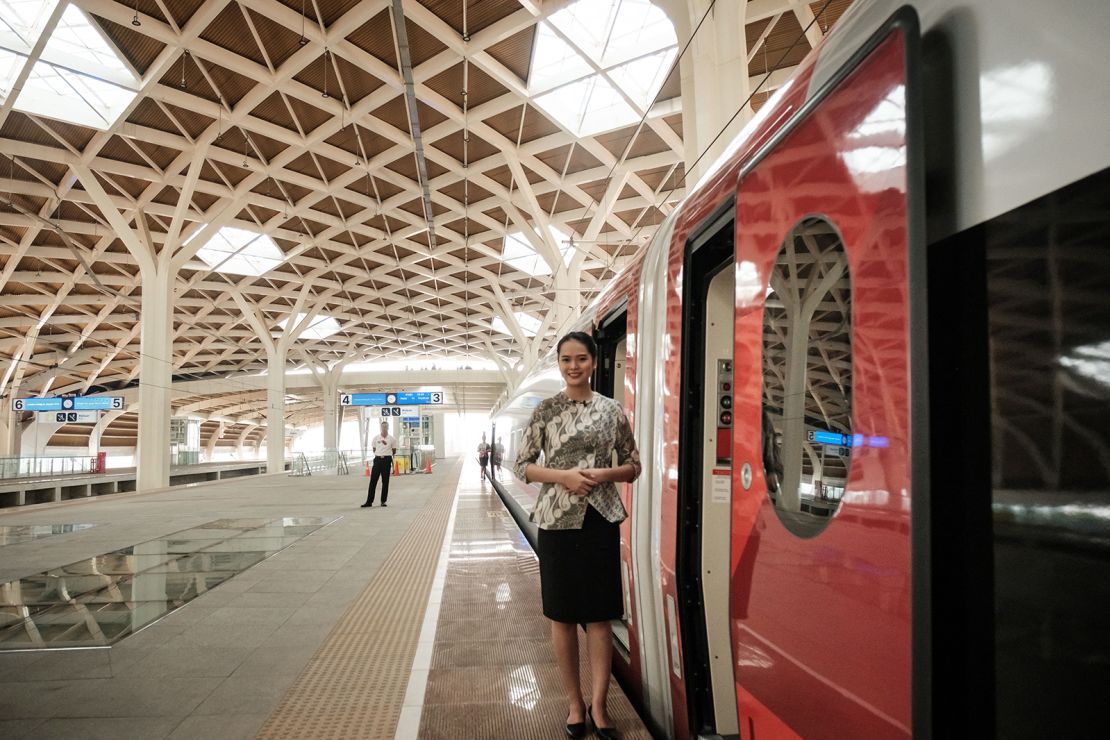
“Any cross-country infrastructure will certainly involve multiple countries and governments and will concern the issue of sovereignty and laws,” says Wong Muh Rong, managing director and founder of corporate advisory firm Astramina Advisory in Kuala Lumpur. “In addition to costs, that in itself is a ginormous thing and not something that can be addressed easily.”
Wong reiterated that while there were “definite advantages” to high-speed trains, the decision to build and launch one has to be balanced with costs and benefits.
“In the example of a high-speed railway line between Malaysia and Singapore, Singapore would likely have just one stop – Malaysia would have more,” Wong told CNN. “But who will have the ultimate say? And if additional external funding comes from China, it will make things even more complicated.
“For now at least, there is no need for a high-speed rail line between Malaysia and Singapore, especially when there are already efficient rail trains and flights less than three hours. The costs are just way too high and it would be too difficult to do.”
With reporting from Hassan Tayir in Hong Kong.
